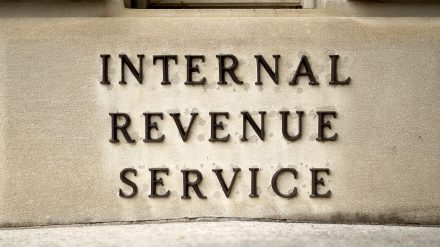Several years ago, our church faced a major capital campaign. This was the largest in our church’s history, so my wife and I were asked to meet face-to-face with key leaders.
As Karen and I drove to a coffee shop to meet a twenty-something couple in our church, I thought, This meeting may not be easy.
Mark and Debbie care so passionately about social justice, they moved into the lowest-income apartment complex in our area, and they have the bedbug bites to prove their commitment. Now we’d be asking them to give, when much of their gift would build a new sanctuary for our suburban congregation.
We warmed up by asking what Mark and Debbie thought about Sunday’s sermon, when our senior pastor kicked off the public phase of the campaign with a passionate message about God’s call to Abram to “Go.”
Mark was direct: “C’mon, just because God told Abram to go to a new land, doesn’t mean God is telling our church to go to a new building.”
Hmmm. Raising money from Millennials is not going to be easy, I realized.
Modifying the traditional campaign
Church capital campaigns follow a pattern: private phase, public phase, advance- commitment night, commitment Sunday, and so on.
While this traditional pattern has been tested over decades, it’s important to remember it was not designed by Millennials (people born roughly between 1980 and 2000) or Generation Z (people born roughly between 1997 and 2012).
In fact, many campaigns essentially write off younger generations and assume the heavy giving will be done by Generation X or Baby Boomers.
But when our church faced its campaign, it did not have that luxury: 80 percent of its adults were younger than age 40. Either Millennials got behind this campaign or we didn’t have one.
So we assertively modified the traditional campaign. This led to animated conversations with our capital-campaign consultant. But that give-and-take made the campaign right for our Millennials. It made us appreciate our consultant all the more (because she was willing to adjust traditional approaches but wisely kept us from jettisoning too much). And it led to a campaign that exceeded our expectations. Here are seven lessons we learned.
1. Provide real help for people in real need.
Millennials’ gift to the church, in my opinion, is their outward focus; they define greatness as serving others. When our church bought a 50-year-old plastics factory and wanted to raise money to renovate it for a sanctuary, classrooms, and office, we got questions. Some of our Baby Boomers worried, “Can we make a deserted factory beautiful enough to reflect our worship of God?” Some of our Millennials worried, “Will we make our own church so nice that we hurt our ability to help people in Section 8 housing?” Our campaign’s tagline was “For the Lord, the Lost, and the Least,” and Millennials were the most likely to ask about that final word.
We won over many Millennials by the undeniable fact that this factory was scrappy and that we purchased it at auction for a startlingly low price.
And, we used the campaign to increase our giving to people in need. “We are not going to build this sanctuary on the backs of the poor and the trafficked,” we said publicly. “We are not going to ask our missionaries to live on less for the next two years. Instead, at the very time when we need every dollar for this building, we are going to boost our outward giving by 26 percent.”
Millennials will dig deep as they see your church trying to “live simply so that others may simply live.”
2. Dial down the hype.
Run each statement, fact, goal, or idea you plan to communicate through a brutal-honesty filter, because the Millennial generation is conditioned to distrust the institution and to question the inauthentic.
For example, on our main campaign video, I didn’t say, “In our rented facilities now, children’s ministry is practically impossible.” Instead, I said, “While not impossible to do now, it’s kind of hard.”
This feels counterintuitive, and you may feel you’re lowering urgency, excitement, and the call to action. But authenticity is non-negotiable.
And because Millennials tend to be skeptical, it’s impossible to communicate too clearly or too exactly where all the money is going.
3. Find ways for everyone to make the team.
During our campaign I heard a fortysomething pastor from another church mock the fact that Millennials grew up on soccer teams where, at the end-of-year banquet, everyone got a trophy.
But why not let that dynamic work for you?
Most capital campaigns, to increase giving, create a culture of exclusivity. The private phase focuses on elite gatherings of high donors. That motivated Boomers—”I got on the elite team.” It bothers Millennials. In our campaign, a few Millennials asked, “Are there secret meetings?”
So in our private phase, we insisted that gatherings include not just high givers, but also high servers, people who give generously of their time. We grew the private-phase invitation list to about a third of our entire congregation. And on advance-commitment night, we didn’t restrict the event to our big givers. Instead, we invited anyone who was ready to make his or her commitment early.
Probably the simplest way and best way to ensure that Millennials won’t feel left out is to recruit some Millennials for your campaign leadership team.
4. Talk honestly about debt.
Debt is a fact of American life: for households with credit-card debt, the average is nearly $7,000. But Millennials, and Generation Z behind them, have felt the vise-grip of debt more painfully than most.
Average debt for graduating college seniors is nearly $30,000, and recent graduates stumble in paying this back when the only jobs they’re finding are part-time, lower-paying, service-sector ones. Add in a car loan, and an occasional bad spending decision, and you understand why the most common question I got during the campaign was, “I want to give, but I have a lot of debts to pay off. What should I do?”
The “realpolitik” of debt
So it’s not enough to talk in glowing terms about faith and generosity and “not equal gifts but equal sacrifice.” We have to talk about the realpolitik of debt. I wrote a blog post addressing this question and included the following thoughts: “One reason debt is such a pain is that it limits our freedom, it cuts off our choices.
I believe that Christians must honor their creditors and pay off their debts: as Paul taught, ‘Let no debt remain outstanding’ (Rom. 13:8). And Jesus teaches in Mark 7:9-13 that it’s not right to use a charitable donation as a way to avoid our prior commitment to love our neighbor. So the painful reality is that paying off your debts must be a high priority for your financial life. Having said that, I do not advise waiting until your debts are fully paid off before giving to God. You need to give for your spiritual health, for your connection to the church, and for your own dignity. Your giving will be lower than you want it to be right now, but over time, as you pay down debts, you will regain the freedom to give more.”
We also asked Dawn, a thirtysomething leader in our church, to give a testimony. She told how in the past year she and her husband had been hit by car repairs, an unexpected home repair, and medical bills, so they were not sure how they could give extra. As they prayed about it, they discovered selling used books and other items online. Many people told me they appreciated her story because it was their story, too.
5. Keep tech relational.
According to a MillennialDonors.com study conducted several years ago, 71 percent of Millennials primarily got information about a nonprofit through web searches, so many people assume the best way to motivate their giving is through technology.
But in our experience, though tech is helpful, it will not replace relationship; you still need to schedule as many face-to-face meetings as time will allow. And as you do communicate via tech (we used our church website, blog, Facebook account, and other social media, plus built a campaign microsite and added online giving, which we didn’t have), don’t think “impressive.” Think “relationship building,” which for Millennials means “authentic,” “fun,” “simple,” and “sharing of stories.”
In all our tech strategies, we invited people to tell their stories of generosity and transformation. Some people wrote brief stories; others created YouTube videos.
Our church must be one of the few left in America that does not show videos in worship services, but we got huge wins with a 14-minute video that we showed after services one Sunday. On it, Jeff and Kimberly, a Millennial couple, talked honestly about their marital separation and loss of a child, and how the church had walked with them through those crises.
In another video, our artists created a fun singalong for kids. One young family visited our church for the first time because they saw the video online.
6. Set the threshold low and the participation high.
We had a financial goal, but what we emphasized more was a participation goal: “We want 100 percent of our members and regular attenders to give.” To increase participation, we did two things.
First, we ran a one-fund campaign (as our consultant astutely advised), in which the general fund and building fund and mission fund are combined. That way, every dollar someone has been giving, or starts to give, contributes. It sets the threshold low so that everyone can participate.
Second, we took the traditional gifts chart—we need so many gifts of this amount, and so many of this amount, and so on—and shifted it downward: fewer of the really big gifts, and lots more of the really small gifts. Many Millennials think, I don’t have much to give. We said, “If every college student here gives $10 a week, that would yield more than $150,000.”
How did we do on participation? We hit 81 percent, a little lower than we’d hoped, but we were delighted that 72 commitments came from people who had never given to our church before.
7. Wrestle your demons to the mat (they can tell if you haven’t).
Millennials can read you as a leader. They may not do so perfectly, but in general, their radar picks up whether you are giving sacrificially, whether you are anxious and therefore pressuring people, and whether this campaign is primarily about you. And though they tend to distrust institutions, they will trust a leader who is honest and unafraid to be in personal contact and let them ask hard questions. This is impossible to do, though, if you’re still anxious about whether your church is going to reach its financial goal. To get free from that anxiety, and therefore, to gain an inner freedom that you can extend to others, comes through prayer and hearing the Word of God. We were already into the public phase of our campaign before I got there, primarily through hearing a sermon by our senior pastor.
It also took me time to break through to the freedom of giving sacrificially. I knew the campaign was coming, months beforehand, when the Lord spoke to me about giving a number that was, for me and my wife, radical. Money is inherently self-deceptive, though, so it took fasting and prayer and conversation before we finally could give that number with unity and joy.
But once I was free from anxiety and free to obey, what a freedom I felt to pastor. With the weak I could be tender and genuinely release them from any pressure to give; with the strong, I could challenge them boldly.
And when I saw the results from Commitment Sunday, I rejoiced. It’s not true that Millennials do not want to commit. It may be that we seldom ask them in ways that release their passion: to belong to an authentic community that is making the world a better place.
We’ve used a combination of AI and human review to make this content easier to read and understand.



















